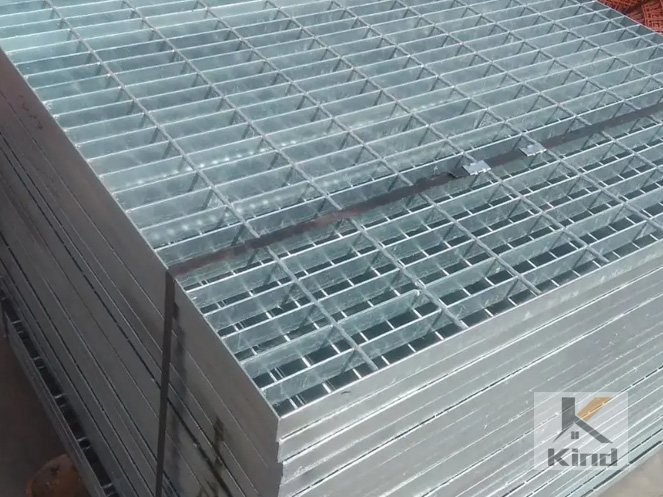Wire mesh manufacturer:Provide customized product services
Email Gary@kindwiremesh.com Mobile +86-18631872999How to solve the surface roughness problem of hot-dip galvanized steel grating
Hot dip galvanizing, also known as hot-dip galvanizing, is a method of obtaining a metal coating on steel components by immersing them in molten zinc solution. In recent years, with the rapid development of high-voltage transmission, transportation, and communication industries, the requirements for the protection of steel parts have become increasingly high, and the demand for hot-dip galvanizing has also been increasing. Galvanized steel grating is suitable for fences in alloys, building materials, power plants, boilers, shipbuilding, chemical and general industrial plants, municipal construction, platforms, handrails, passage floors, railway bridge sidewalks, high-altitude tower platforms, drainage ditch covers, manhole covers, road barriers, three-dimensional parking lots, schools, factories, enterprises, sports fields, garden villas, and can also be used as external windows for residential buildings, balcony guardrails, guardrails for highways, railways, etc.

So how is the surface roughness problem of steel grating solved during production? How to solve the surface roughness problem of hot-dip galvanized steel grating The rough surface at the tail end of hot-dip galvanized steel grating generally appears in the process layout of external blowing first and then internal blowing. This rough surface is relatively short, but thick, and many exist in the form of water droplets hanging. The main reason for these phenomena is that during internal blowing, the galvanized steel grating is inclined. After blowing, the un solidified zinc liquid continues to flow out, some flows away, and some forms a water droplet hanging shape on the pipe orifice. As the temperature gradually decreases, it solidifies. The main reason for this phenomenon is that when blowing steam suddenly sprays out of the pipe orifice, it diffuses outward and forces the zinc liquid inside the galvanized steel grating to flow and splash around. Due to the viscous effect of the zinc liquid, which is better for the galvanized platform steel grating? A part of the zinc liquid flows along the edge below the pipe orifice end. After condensation, it becomes Short and coarse zinc nodules, their solution: 1) Cancel inclination; 2) Raise the tail of the steel grating and rotate it on the cooling bed until it solidifies; 3) The hot-dip galvanized steel grating is equipped with blowing and wiping facilities around the outer edge of the end pipe orifice.
- Page on:
- No more
